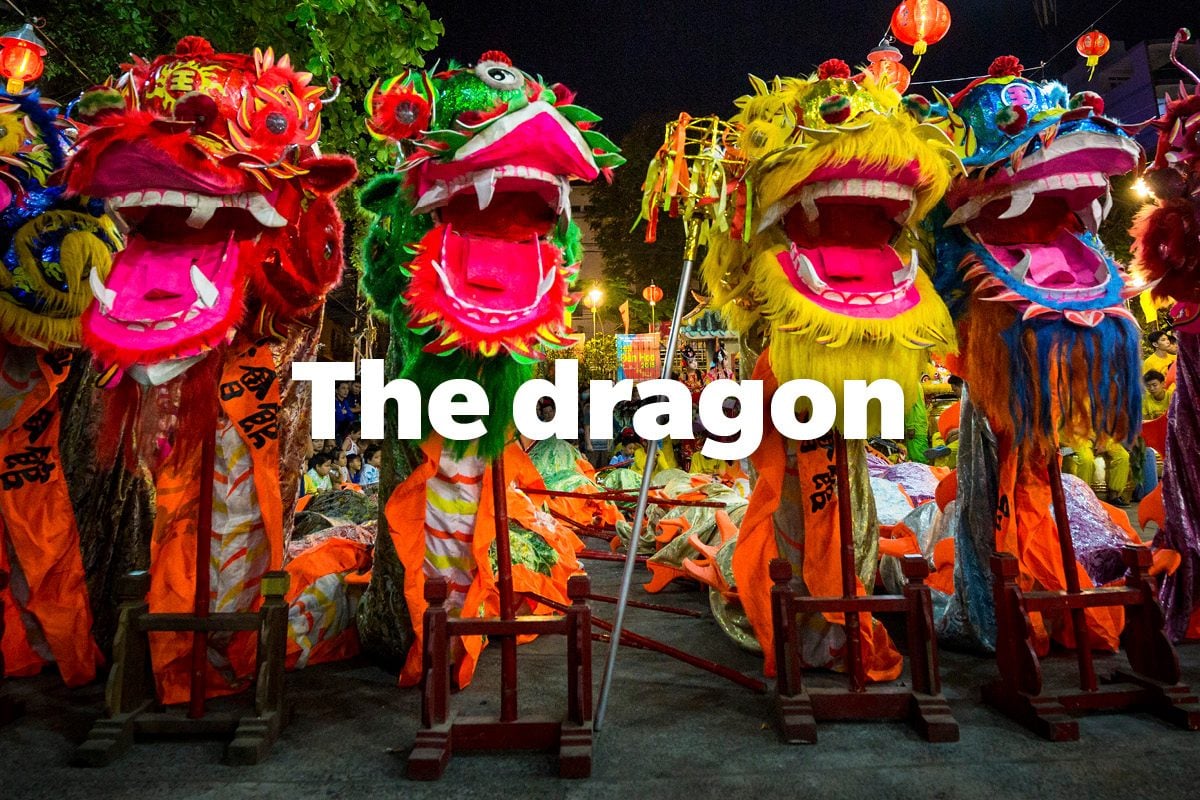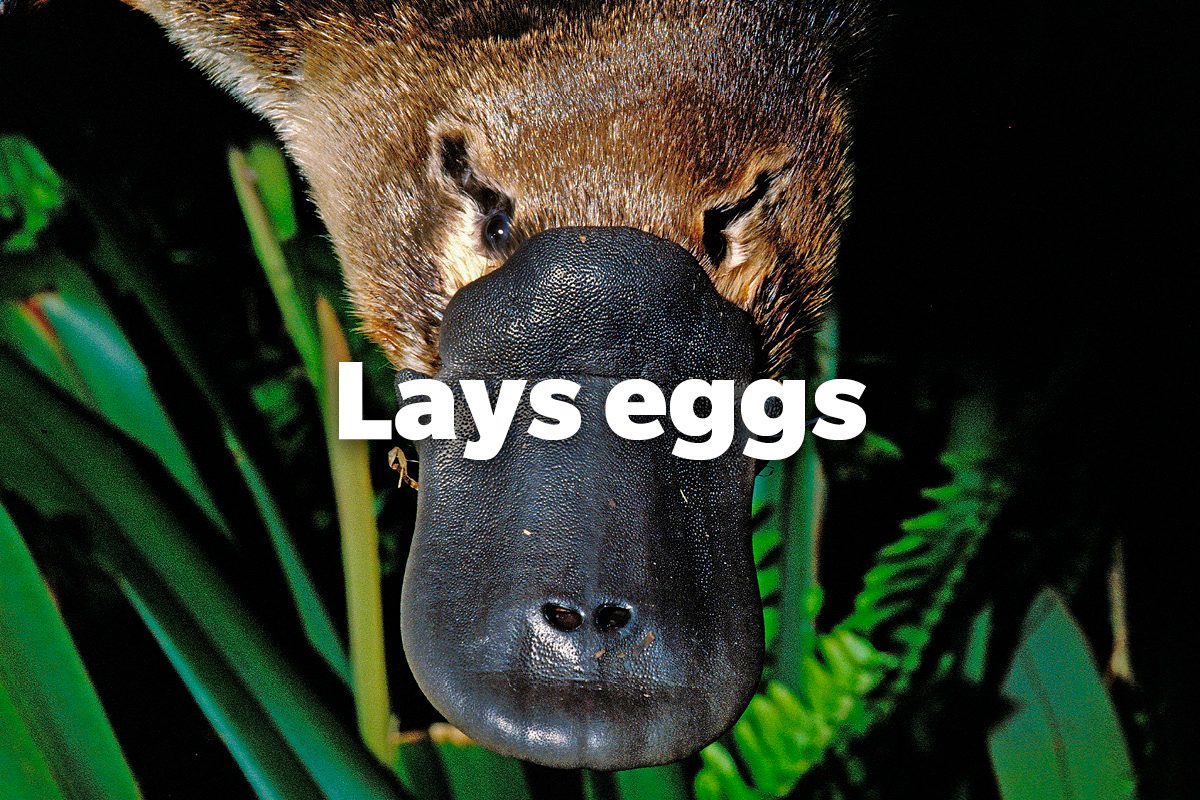What land animal can open it's mouth the widest?
A) hippo B) alligator
C) baboon D) elephant
A!
The hippopotamus has the widest mouth of any land animal. It can open its jaws more than three feet and 150 degrees! Inside the mouth are huge teeth, which can grow to over a foot and a half long.
Why do snakes stick out their tongue?
A. To scare predators B. To lick their prey
C. To make a hissing sound
D. To “smell” the air
D!
The snake sticks out its tongue to gather chemical info from the environment around it, and then carries it back to two receptors on the roof of its mouth. This is also why its tongue is forked: one for each receptor.
How many colors are in a rainbow?
A. 7 B. 10 C. 6 D. 8
A!
The colors of the rainbow can be remembered by an acronym, or the first letter of each word: ROY G BIV. That’s red, orange, yellow, green, blue, indigo, and violet.
What is the most important symbol in Chinese culture?
A. The dog
B. The rat
C. The monkey
D. The dragon
D! While all of these creatures have a place as one of the 12 symbols of the Chinese zodiac, the dragon has an even greater meaning. Unlike in European culture in which a dragon is dangerous and often evil, Chinese dragons are said to be good luck. The Chinese emperors believed they were descended from dragons, and dragons decorated their robes and palaces. 
How many oceans contain sharks?
A) 5 B) half
C) none D) all
D!
All of them. And that’s not all! Some are also found in rivers and freshwater lakes.
What is the largest big cat?
A. Lion B. Tiger C. Cheetah
D. Leopard
B!
The tiger is the biggest big cat around. The largest tiger subspecies, the Siberian tiger, can weigh over 650 pounds and measure more than ten feet in length. But other cats have their claim to fame, too: The lion’s roar can be heard five miles away, and the cheetah is the fastest land mammal on Earth.
What is it called when there are no more of one kind of animal left on Earth?
A. Evolution B. Conservation
C. Extinction D. Endangered
C!
The most famous animals to have become extinct are the dinosaurs, which died out about 65 million years ago. Scientists don’t know exactly why, but it was likely a mass extinction event, either a meteor slamming into Earth or a massive volcanic eruption. But since then, many other animals have gone extinct as well; today, many animals are endangered, or are in danger of becoming extinct, because of human actions such as hunting the animals or destroying their habitat. That’s why conservation, or protecting animals and their habitat, is so important.
What’s the hardest substance in our body?
A. Bones B. Head C. Nails
D. Teeth
D!
Teeth enamel is the hardest substance in the human body, even stronger than bone. Teeth enamel is 96 percent mineral, more than any other part of your body, which is what makes it so hard. On the other hand, bones are mostly made of collagen, which is softer and flexible. But because collagen is alive, it can repair, so if you break a bone, it will heal. But if you damage your tooth enamel, it can’t repair the damage because it isn’t made of living cells.
What holiday celebrates the end of slavery in the US?
A. July 4 B. Thanksgiving
C. Juneteenth D. Memorial Day
C!
the anniversary was celebrated on June 19, and the holiday’s name was eventually shortened to “Juneteenth.” The 13th amendment to the Constitution officially abolishing slavery was ratified on December 6, 1865.
What are the three states of matter?
A) solid, liquid, gas
B) solid, freezing, gas
C) solid, rocks, gas
D) gas, liquid, frozen
A!
Solid, liquid, and gas.
What is the only flying mammal?
A. The bat B. The flying squirrel
C. The bald eagle D. The colugo
A!
The flying squirrel and the colugo (also sometimes called a “flying lemur,” although it’s not really either) only glide, and the bald eagle is a bird, not a mammal. That leaves the bat! It’s able to fly with winged membranes stretching over thin bones that allow it to flap its wings.
What’s the biggest planet in our solar system?
A. Jupiter B. Saturn
C. Neptune D. Mercury
A!
Jupiter is a massive planet of swirling gasses, twice as big as all the other planets combined. Jupiter is made up mostly of hydrogen and helium, but scientists don’t know if there’s a solid core below—if there is, it’s probably only the size of Earth. This “gas giant,” though, could fit 11 Earths across it; for comparison, if the Earth was a grape, Jupiter would be a basketball.
Where is the fastest muscle in the body?
A. The leg B. The arm
C. The fingers D. The eye
D!
A muscle around the eye is the fastest muscle in the human body. It can close the eyelid in 100 milliseconds, or one-tenth (.1) of a second. This fast motion is likely where the expression “in the blink of an eye” came from!
What is the length around a circle called?
A. Diameter
B. Radius
C. Circumference
D. Area
C!
The circumference of a circle measures the length all around its border. The radius is the measurement from the center of a circle straight to the edge. The diameter is the distance straight across, and the area is all the space inside the circle.
Fill in the blank.100 degree Celsius equal to _____ Fahrenheit.
A) 212 B) 1002
C) 201 D) 333
A!
How can you tell an insect and a spider apart?
A. Insects have three body parts; spiders have two.
B. Insects have six legs; spiders have eight.
C. Insects can have wings but spiders can’t.
D. All of the above.
D!
Spiders are not insects but arachnids. And spiders survive by feeding on insects. You can recognize a spider because it has two body sections, eight legs, and doesn’t ever have wings;
insects have three body sections, six legs, and can have wings. In addition, spiders have eight eyes and no antennae; insects have two eyes and do have antennae.
What’s a blue moon?
A. When the moon turns blue
B. When the moon falls on Halloween
C. The second full moon in a month
D. When a Hunter’s Moon falls on Halloween
C!
In 2020, a “blue moon” fell on Halloween, October 31, which was also the night of the Hunter’s Moon. But what exactly is a blue moon—or a Hunter’s Moon? While not an official astronomy term, a blue moon generally means the second full moon in a month.
What is the largest country on Earth?
A. The United States
B. Canada
C. China
D. Russia`
D!
At over six million square miles, Russia is by far the world’s largest country, stretching all the way from the border with Europe to the Pacific Ocean. It takes up 10 percent of all the land on Earth! Canada comes in second, the US third, and China fourth. China, though, has the most people living in it, with a population of nearly a billion and a half.
What shape is a stop sign?
A. Hexagon
B. Trapezoid
C. Octagon
D. Parallelogram
C!
The classic red stop sign has eight sides, making it an octagon. A hexagon has six sides. A trapezoid and a parallelogram have the same number of sides (four), but they are different because of how their sides relate to each other.
True or false:
Light travels faster than sound.
TRUE!
Light waves travel much faster than sound waves. Light waves do not need a medium in which to travel but sound waves do. Explain that unlike sound, light waves travel fastest through a vacuum and air, and slower through other materials such as glass or water.
What does the duck-billed platypus do that hardly any other mammals do?
A. Quacks like a duck B. Lays eggs
C. Builds nests D. Waddles
B!
 The duck-billed platypus is one of only two mammals that lay eggs, called “monotremes”: the other is the echidna, or spiny anteater. The platypus lays one or two eggs in her burrow, keeping them warm with her body, while the echidna develops a pouch to keep her egg in until it hatches.
The duck-billed platypus is one of only two mammals that lay eggs, called “monotremes”: the other is the echidna, or spiny anteater. The platypus lays one or two eggs in her burrow, keeping them warm with her body, while the echidna develops a pouch to keep her egg in until it hatches.
Does ice sink or float in water?
A. Sink
B. Float
C. Sometimes it sinks, sometimes it floats
D. Ice is water, so this is a trick question
B!
Ice is actually the solid form of water, so they are not exactly the same thing. And ice, whether it’s ice cubes in a glass or a frozen layer of ice on a lake, always floats. Why? Most solid objects, like rocks, are heavier than water, so they sink. But ice is a bit different because it has less density: As water freezes, it sort of spreads out, so it ends up with less mass in the same amount of space. This is a special property of water, because most substances are less dense as a liquid than as a solid.
What is the smallest country on Earth?
A. Monaco
B. Luxembourg
C. Vatican City
D. Madagascar
C!
Although its name has the word “city” in it, Vatican City is actually its own tiny country surrounded by the city of Rome, Italy. It’s less than a square mile, and the smallest nation in the world out of 254 total countries. Also called the Holy See, it’s where the Pope lives: He is the head of the government there, as well as of the Catholic Church around the world.
What comes after a trillion?
A. Billion
B. Quadrillion
C. Quintillion
D. Googol
B!
After a billion comes a trillion, which is 1,000 billions. Then, a quadrillion is 1,000 trillions: There are 15 zeros in a quadrillion.
What color blood does a cockroach have?
A) white B) red
C) colorless D) black
C!
The reason insect blood is usually yellowish or greenish (not red) is that insects do not have red blood cells. Unlike blood, haemolymph does not flow through blood vessels like veins, arteries and capillaries. Instead it fills the insect's main body cavity and is pushed around by its heart.